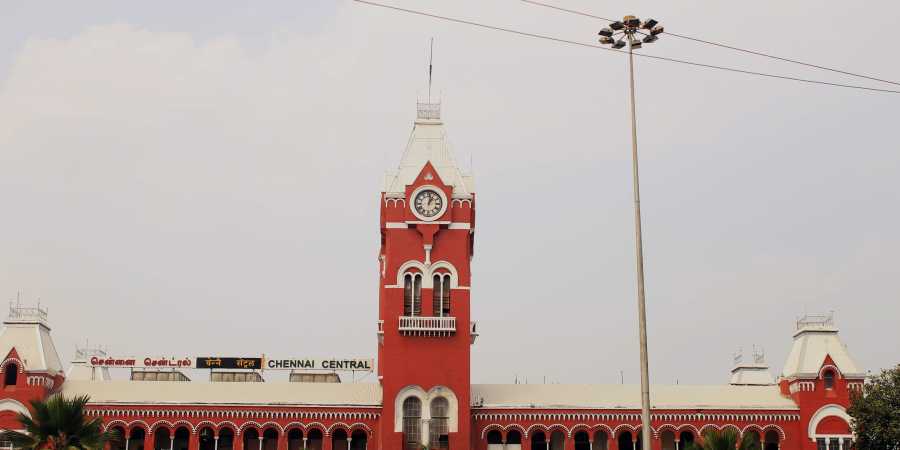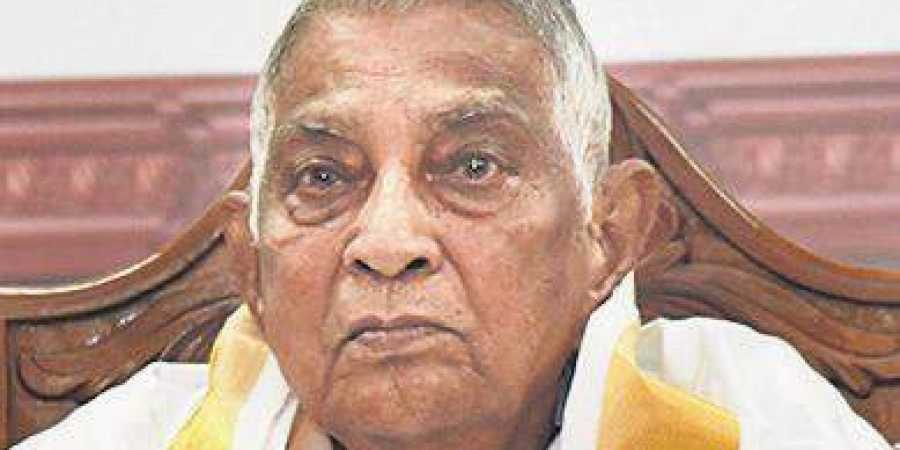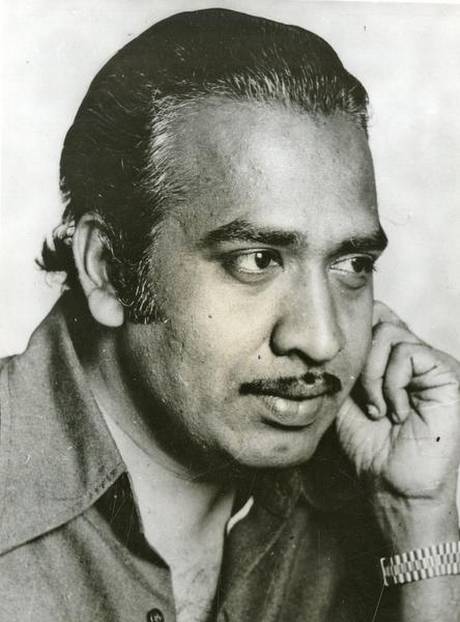09
Chennai Central station’s name change is now official
PM Modi had announced the renaming to Puratchi Thalaivar Dr MG Ramachandran Central Railway Station at a public meeting.

Chennai :
The State government has notified renaming of Chennai’s Central Railway station after late Chief Minister MG Ramachandran, giving effect to an announcement made by Prime Minister Narendra Modi at a public meeting on March 6. The station is now the Puratchi Thalaivar Dr MG Ramachandran Central Railway Station.
On March 9, the Union Home Ministry conveyed its ‘no objection’ to the proposal. Sources said the State then got permission from the Election Commission of India to notify the name change and issued an extraordinary notification in the government gazette on April 5.
Sources said the notification did not violate the model code of conduct as the announcement and ‘no objection’ were made ahead of notification of Lok Sabha polls. Senior advocate S Doraisamy filed a complaint with the Chief Electoral Officer against the notification, claiming it was issued in violation of the model code and should be withdrawn.
source: http://www.newindianexpress.com / The New Indian Express / Home> Cities> Chennai / by Express News Service / April 07th, 2019
Tamil scholar Silamboli Chellappan no more
The souvenirs for World Tamil Conferences at Chennai and Madurai and the souvenir for ‘World Semmozhi Conference’ at Coimbatore were prepared under his supervision.

Chennai :
Well known Tamil scholar and an orator Silamboli Su Chellappan (91) passed away on Saturday due to age-related ailments at his residence at Tiruvanmiyur here. Leaders of political parties, including DMK president MK Stalin, MDMK general secretary Vaiko, TNCC president KS Alagiri and PMK founder S Ramadoss have condoled the death of the scholar.
Chellappan was born on September 24, 1928 at Siviyampalayam village near Namakkal and his discourses on Tamil epic Silappathikaram were well known and the late Tamil scholar RP Sethupillai hailed him as Silamboli Chellappan. Souvenirs for World Tamil Conferences at Chennai and Madurai and the souvenir for ‘World Semmozhi Conference’ at Coimbatore was prepared under his supervision. He also served as Director of Tamil Nadu government’s Tamil development department and Director of publications, department of Tamil University in Thanjavur.
He had travelled widely across the globe to attend many international conferences on literary events. Sanga Ilakkiya than and Semmozhi Thamizh Agapporul Kalanjiam were among the books authored by Chellappan.
In his message, Stalin said, “I convey my condolences on behalf of DMK over the demise of Silamboli Chellappan. His worked for Tamil and his deep relationship with the language would last eternally. ”Thol Thirumavalavan, VCK president said” He worked hard to spread Silapathikaram, an epic, among the masses. His death would be a big loss to Tamil and Tamil scholars”.MDMK’s Vaiko, Alagiri; S Ramadoss; and ER Eswaran, general secretary of Kongu Nadu Makkal Desiya Katchi, also condoled the death of the Tamil scholar.
source: http://www.newindianexpress.com / The New Indian Express / Home> States> Tamil Nadu / by Express News Service / April 07th, 2019
06
05
04
03
Noted director J. Mahendran passes away

Noted film director J. Mahendran, 79, passed away early on Tuesday morning, following a brief hospitalisation. His son John Mahendran confirmed his passing on social media.
He was admitted to Apollo Hospitals on March 27, after he became sick following a dialysis session. He was on a ventilator, according to hospital sources, but was discharged on Monday.
Mahendran has directed several memorable films including Mullum Malarum, Johnny and Nenjathai Killadhey. He was recently seen in Vijay Sethupathi’s Seethakaathi, the Rajinikanth-starrer Petta and Boomerang, starring Atharvaa Murali that released earlier this month.
Renowned for his writing, he is also a part of the Blue Ocean FIlm and Television Academy(BOFTA) in Chennai where he heads the filmmaking and direction course.
Mahendran’s remains will be laid at his home from 10 a.m. where the public can pay their respects. The funeral is set to be held at 5 pm.
Dravida Munnetra Kazhagam president M.K. Stalin tweeted out his condolences. “Director Mahendran was a hero among the directors of the Tamil film world. He was multifaceted – a writer, he made realistic films and an actor as well and his passing away is a great loss,” he said.
Speaking to PTI, the filmmaker’s long time associate and producer G. Dhananjayan said Mahendran redefined the Tamil cinema at a time when it was dominated by the trend of delivering lengthy dialogues.
“He brought the touch of realism into Tamil cinema and it made people connect more to his movies. Mahendran is the forefather of realistic Tamil cinema,” Dhananjayan added.
Filmmaker A.R. Murugadoss took to Twitter to pay homage to the director.
“It is deeply saddening to hear the demise of one of the pioneer filmmaker #Mahendran sir. You and your films live forever in our hearts sir. Rest in peace,” he wrote.’
(With inputs from PTI)
source: http://www.thehindu.com / The Hindu / Home> Entertainment> Movies / The Hindu Net Desk / April 02nd, 2019